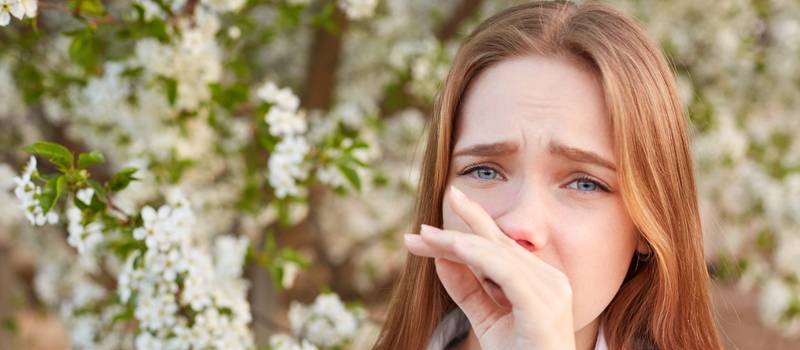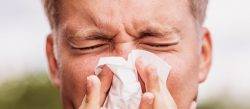Are allergies on the rise?
Are allergies on the rise? Allergic disease currently affects more than four million Australians and is rising in prevalence. It…
Read MorePublished on May 23, 2022

Acute: Describes a disease or condition with a rapid onset, intense or severe symptoms and of brief duration.
Allergen: Any substance that can cause an allergic reaction in a hypersensitive person.
Allergen immunotherapy: An allergy treatment which involves the administration of gradually increasing doses of allergen extracts, over a period of years. The allergen is usually given by injection or under the tongue. Also known as desensitisation, it allows the allergen to be tolerated over time.
Allergist: A doctor specialising in allergy.
Allergy: A disorder in which the body becomes hypersensitive to particular substances, which cause specific symptoms whenever they are inhaled, ingested, injected or contacted. Different allergies affect different parts of the body and symptoms may vary from hay fever and skin redness to digestive complaints.
Antibodies: Proteins in the blood which are produced in response to a specific allergen. Antibodies circulate in the bloodstream and attack the allergen.
Antihistamines: A drug that blocks the action of histamine in the body by blocking histamine receptors. Histamine is the chemical responsible for producing allergic reactions such as hayfever and itching.
Challenge test: An allergy test which involves exposing a person to a suspected allergen in a controlled setting. Also known as provocation testing, this type of test may provoke severe allergic reactions and therefore should only be done by a doctor.
Chronic: Describes a disease of long duration with slow changes. The onset of a chronic condition is often gradual.
Corticosteroids: A group of medications that help reduce inflammation and affect the immune system. They are similar to the hormones produced in the adrenal gland to fight stress in times of injury or illness.
Dander: Material shed from the body of humans and various animals that have fur, hair, or feathers.
Decongestant: A medication that helps relieve or reduce nasal congestion. They may be in the form of a nasal spray or drops, or taken by mouth.
Desensitisation: A treatment method for reducing the effects of a known allergen. Gradually increasing doses of the allergen are injected over a period of time, until a tolerance is built up.
Dust mites: Tiny mites that commonly live in house dust. They are too small to be seen with the naked eye and thrive in warm, humid environments. Dust mites can trigger an allergic reaction in sensitive people, and may cause symptoms such as sneezing and runny nose.
Hayfever: Also known as allergic rhinitis. A type of allergy caused by the pollen of grasses, trees and other plants which can cause symptoms of sneezing, running nose, nasal congestion and watery eyes.
HEPA Filter: HEPA (high efficiency particulate air [filter])is a type of pleated mechanical air filter that can theoretically remove at least 99.97% of dust, pollen, mould, bacteria, and any airborne particles with a size of 0.3 microns (µm).
Hives: A type of rash characterised by circular weals (bumps) of reddened and itching skin. It is an allergic reaction which may be triggered by infection, insect stings, medications or other allergens.
Histamine: A chemical found in nearly all tissues of the body, which is released during allergic reactions and is responsible for the symptoms associated with allergies.
Mould: A type of fungus that lives on plant and animal matter. It thrives in damp and poorly ventilated areas and reproduces by making spores.
Neutrophil: A type of white blood cell which provides an important defence against infection by ingesting and killing bacteria.
Oral Allergy Syndrome: (Pollen Allergy Syndrome) People with Oral Allergy Syndrome are sensitive to substances in pollen and similar substances present in other plants, like raw or semi-cooked fruit or vegetables. This is known as cross-reactivity. In this condition, itching and swelling of the mouth and tongue occurs, usually after eating uncooked or semi-cooked fruit.
Patch test: A test used to identify delayed allergic reactions, which usually affect the skin. Up to 30 allergen extracts are applied to a patch, which is placed on the skin of the arm or back for 48 hours. The health care provider then removes the patch and observes the skin for any signs of an allergic reaction.
Pet dander: Skin cells shed by pets such as dogs and cats. Dander contains allergens which may cause an allergic reaction in sensitive people.
Pollen: A mass of male spores in a seed plant, which appears as a fine dust.
Pollen count: A pollen count tells you the average number of pollen grains per cubic metre of air. This is important information for allergy sufferers, who may like to know when pollen levels are low, moderate or high.
Prick test / skin prick test: The most common type of allergy skin test, the prick test is used to detect immediate allergic reactions for up to 40 different substances at a time. During the test, a drop of each purified allergen extract is pricked or scratched into the skin’s surface. After 15 minutes, the health care provider will then assess the skin for allergic reactions, such as reddening or swelling.
RAST: RadioAllergoSorbent Test, which measures the level of allergen specific antibodies in the blood. This test is performed when skin testing is not easily available, or when a person is taking medication which makes accurate skin testing impossible, such as antihistamines.
Rhinitis: A condition characterised by a stuffy or runny nose, mucus in the throat (postnasal drip) and sneezing. It may have non allergic and allergic causes, such as in the case of hayfever.
Seasonal (intermittent) allergic rhinitis: Also known as hay fever. An allergic reaction triggered by outdoor allergens, including pollen and mould spores. Symptoms may include a stuffy, runny nose, sneezing and red, itchy eyes.
Sinusitis: Inflammation of one or more of the sinuses, which are air filled spaces in the facial bones that communicate with the nose. Symptoms may include pain, purulent discharge from the nose, nasal obstruction and decreased sense of smell.
Urticaria: The medical word for hives, which are itchy, raised lumps that can vary in position from hour to hour or day to day.
Vaccine: A special preparation designed to help provide immunity against one or more diseases. Vaccines are administered to healthy people in order to stimulate their immune system to respond and build up immunity to certain diseases.
For more information, visit the ASCIA website.
Always read the label and follow the directions for use.
Learn about which Telfast product may be appropriate for you.
SEE THE PRODUCTS HEREMAT-AU-2102147. Nov 2021

Are allergies on the rise? Allergic disease currently affects more than four million Australians and is rising in prevalence. It…
Read More
What are allergies? Allergies are caused by an overreaction of the immune system to a particular substance, known as an…
Read More
Acute: Describes a disease or condition with a rapid onset, intense or severe symptoms and of brief duration. Allergen: Any…
Read MoreIf you’d like to know which product might be suitable for your needs, or if you have questions relating to any of our products, please fill in the form below. We’d love to hear from you. To speak with a team member or report an adverse event, please call 1800 818 806 within Australia.
Thank you for your submission. A representative will be in contact shortly.
Submit